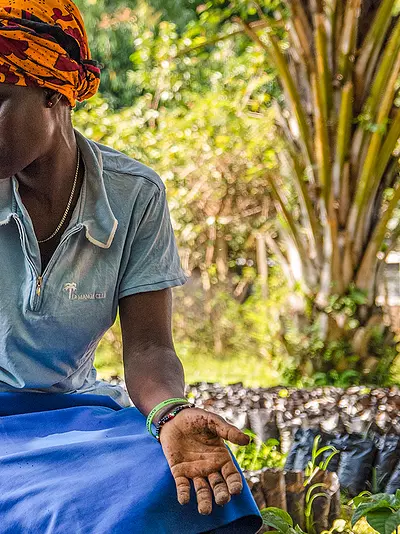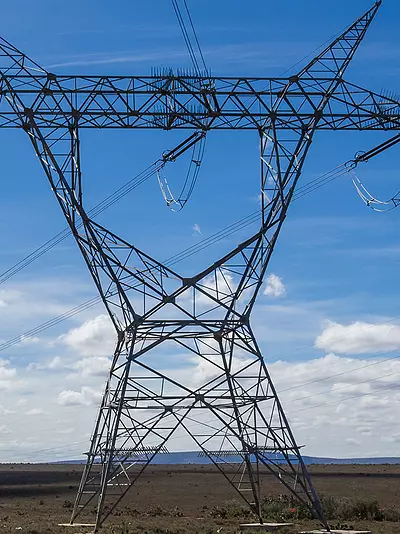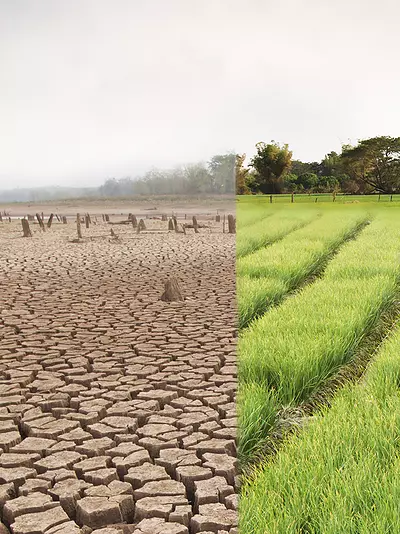
Although COP28 has concluded, the urgency of the climate crisis persists. As we press forward, turning dialogue into action is paramount. Every partnership formed, lesson learned, and insight gained during COP28 is a resource to create tangible, lasting impact to address the challenges created by climate change. COP28 was a checkpoint, not a finish line.
During COP28, we actively participated in a diverse array of events, engaging with and learning from our climate colleagues. Our team members shared expertise in water, health, energy, agriculture, economics, finance, and policy, as well as advanced the goals of our partnership with the Caribbean Community Climate Change Centre.
Here are our key takeaways from this year’s COP, coupled with insights into the essential actions required to reduce global emissions and strengthen climate resilience.
New and noteworthy COP28 highlights
COP28 was historic in several ways. For the first time, language was adopted regarding transitioning away from fossil fuels — a deal facilitated by UAE’s Sultan Al Jaber, who represents both an oil company and a country reliant on fossil fuels. This agreement was complemented by across-the-board recognition, including from the world’s largest oil and gas producers, that we need to reduce methane emissions to reach 2030 targets. While no specifics were offered on how we will transition away from fossil fuels, an agreement was reached to triple renewable energy capacity globally and double the global average annual rate of energy efficiency improvements by 2030. It will now be up to national policymakers, local communities, the private sector and other stakeholders to do the work on the ground to turn these pledges into action.
This was also the first COP that explicitly focused on the widespread impact of climate change on the health of communities around the world. The global health research, advocacy, and implementation community showed up in force to highlight the human cost of climate change and push for action. Only one national health minister attended COP27—this year, 60 health leaders were in attendance from Africa, Asia, South America, and the Middle East spotlighting their countries' concerns and commitments.
The Declaration on Climate and Health, which unveiled a set of 10 principles to bolster financing for climate and health, mobilize new and additional finance, and foster innovation with transformative projects and new multi-sector approaches, was endorsed by over 120 countries and more than 40 financing partners and civil society organizations. The COP28 Guiding Principles for Financing Climate and Health Solutions signaled the growing collaboration across funders and the momentum to support climate and health solutions in a sustainable manner. Collectively, these partners have committed to dedicate $1 billion to address the expanding climate-health crisis.
COP28 also delved into the role of agriculture in building resilient food systems and addressing climate change such as by improving soil health and reducing food waste/loss. The Declaration on Sustainable Agriculture, Resilient Food Systems, and Climate Action, endorsed by 159 countries, calls for food and agriculture to be formally added to the goals of the Paris Agreement.
We repeatedly heard that agriculture has a part to play – with encouraging news that substantial emission reductions can be achieved through relatively simple changes and existing technology. For example, the Australian beef association improved its agroforestry and pasture management and reduced emissions by 65%. Such impressive results motivate us as we launch a new AIM for Climate Innovation Sprint to reduce methane emissions from dairy cattle kept by smallholder farmers, starting with Ethiopia, Africa’s largest provider of livestock.
Simultaneously, COP28 underscored water as a critical resource affected by climate change, officially recognized as part of the official agenda only a year prior at COP27. Many speakers agreed that the climate crisis is a water crisis, with most impacts and damages occurring due to either excess or insufficient water.
COP28 was the largest climate conference to date, with 85,000 participants, including negotiators and observers. In addition, the participation of youth was much stronger and there were several youth pavilions and other institutional changes to support their participation.
Focus on climate finance initiatives at COP28
Climate finance remains a priority topic, with growing awareness of the need to provide finance for adapting to climate change. Developed countries and the private sector are slowly beginning to provide the support that developing countries need to meet climate targets. The UAE pledged $30 billion for new investments in climate-friendly projects, including $5 billion for the Global South. Latin America is earmarked for climate investments of $2 billion annually through 2030, while $10 billion has been allocated for climate investment in the Philippines between 2024 and 2029. Some 31 countries have pledged $12.8 billion to the Green Climate Fund.
A historic COP moment was the first-day decision operationalizing the “loss and damage fund,” which was established at COP27, where wealthy nations compensate developing nations for damages incurred by a crisis they did not create. Wealthy nations provided initial pledges to capitalize the fund with over $700 million. While this amount does not close the gap in finance needed for combating climate change, it signaled a step in the direction of climate justice for these vulnerable countries.
In addition to such pledges, there is a recognition that avoiding the worst impacts from climate change requires looking at opportunities to decarbonize and reduce emissions across all sectors – maximizing the use of existing solutions, deploying new technologies, and adopting other strategies to address climate change. To do this, we need to better leverage the private sector; the full force of private and public resources is the only hope to meet the funding needs.
One solution that was highlighted was the use of carbon markets as a means of scaling up activities such as forestry, land use, and renewable energy that can offset emissions produced elsewhere. When they work as intended, markets can engage the private sector at scale and channel climate finance to communities and local actors to help mitigate or adapt to climate change. However, recent scandals in the industry have illustrated the need for enhanced quality control and transparency. New technologies, methodologies, and regulations were all promoted at COP to increase confidence that offsets can deliver reliable carbon emissions reductions going forward. The COP did not succeed in adopting rules for global carbon markets (implementing Article 6 of the Paris Agreement), and negotiations will continue at the next COP.
Pick up the pace for climate solutions
While some progress has been made, we are not moving fast enough. Though much of the COP28 discussion focused on limiting global warming to 1.5°C, compared to pre-industrial levels, by 2050, it was accompanied by the acknowledgement that the parties are woefully behind in taking real steps to meet global warming goals. We are already at 1.3°C and unfortunately, 2023 was another year of increased coal production. According to IEA, “Global coal production is forecast to have risen by 1.8% in 2023, with continued growth in India, China and Indonesia more than offsetting declines in the United States and the European Union.”
In addition to our conversations on reducing emissions and meeting climate-related targets, we need to pay more attention to the impacts we are seeing today. We are experiencing the effects of climate change today, with stronger hurricanes, more severe non-tropical rainfall events, an increase in climate-sensitive diseases, and longer droughts occurring around the world. Low-lying countries and small developing island nations cannot wait 20 more years for the world to phase out fossil fuels as they are already losing habitable land.
Talking to and hearing from people on the ground — the farmers, island governments, emergency managers, and other local people dealing with climate change impacts — reiterated for us that climate solutions need to be swift and locally led. Around the world, people remain focused on building and strengthening climate resilience in their communities, but they need financial help to improve their own livelihoods, resilience, and health.
Charting a sustainable path forward amid climate challenges
We have reached a place where we must look at every sector and every viable technology and solution that is available, while seeking even greater impacts by exploring the nexus of food-energy-water and the nexus of climate-health. We need to decarbonize energy and transportation, protect and increase nature-based solutions, avoid building anything that is not climate resilient, make sure societies are planning for a climate-changed world, and communicate the behaviors that are needed to reduce emissions and adapt to climate impacts.
It’s essential to keep investing in improving climate science while vastly increasing funding for mitigation and resilience efforts. Mitigation priorities must include agriculture, which is challenged to reduce its emissions while producing 56% more food by 2050, as well as expanding the share of renewable energy in the global energy mix, displacing generation based on fossil fuels, transitioning to electric vehicles, and implementing energy saving and efficiency measures. We collectively need more climate finance flows going into adaptation and mitigation projects, along with innovations in climate finance and stronger private sector participation.
It’s no longer enough to measure climate change or climate responses in terms of global temperature change or total volume of greenhouse gas emissions. Rather, we must also discuss climate change in terms of lives lost and lives saved. Everything we do should be viewed from a lens of climate change, regardless of the sector.
Learn more about RTI’s Center for Climate Solutions.







